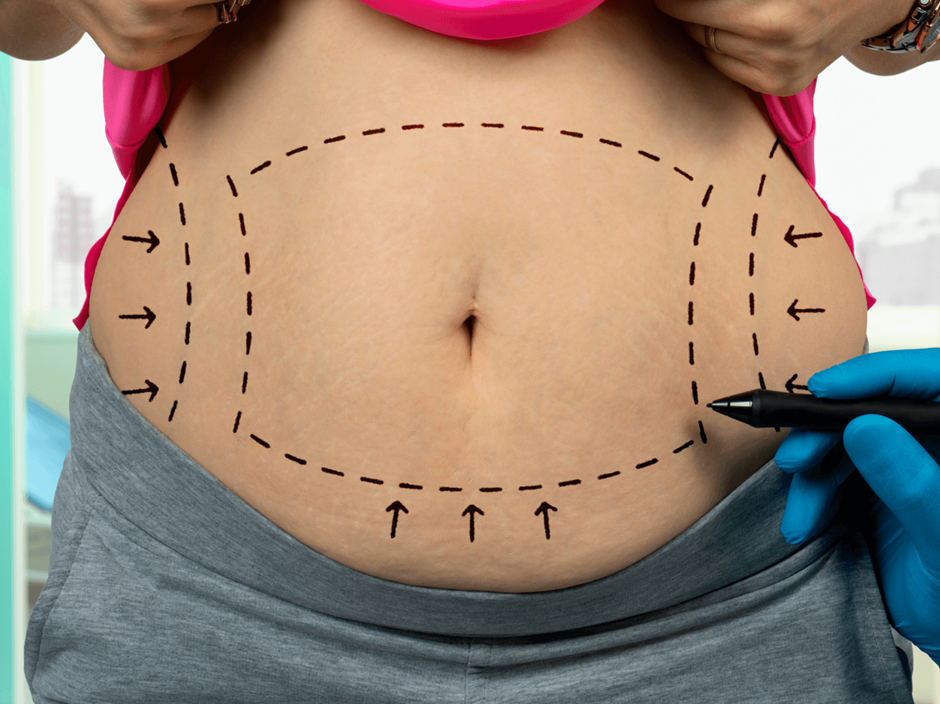Sculpting Your Body: The Complete Guide to Liposuction
Liposuction stands out as a sought-after cosmetic surgery, aiming to refine body contours by removing localized fat that resists traditional weight loss methods. This comprehensive guide delves into the essence of liposuction, its procedural intricacies, candidacy prerequisites, recovery nuances, and the associated risks and rewards.

What is Liposuction?
Liposuction, also termed lipoplasty or body contouring surgery, is a surgical intervention geared towards enhancing body proportions by eliminating stubborn fat pockets. It's vital to note that liposuction isn't a weight reduction remedy but a means to refine body contours.
The Procedure Demystified
Preparation and Anesthesia:
Prior to the procedure, thorough evaluation and consultation with a board-certified plastic surgeon are imperative. On the surgery day, anesthesia is administered to ensure patient comfort. The choice of anesthesia—local, regional, or general—depends on the surgery's extent and the surgeon's expertise.
Incision and Tumescent Solution:
Small incisions are made near targeted fat deposits. A tumescent solution comprising saline, lidocaine (anesthetic), and epinephrine (vasoconstrictor) is injected to minimize bleeding and aid fat removal.
Fat Removal:
Using a thin tube (cannula), excess fat cells are delicately loosened and extracted from targeted areas. The cannula connects to a suction device, facilitating fat removal. Specialized techniques are employed to sculpt and contour treated areas for optimal results.
Closing Incisions and Recovery:
Post-fat removal, incisions are sutured or taped. Patients may experience mild discomfort, swelling, and bruising. Compression garments are worn to support treated areas, alleviate swelling, and expedite healing.
Diverse Techniques of Liposuction
- Traditional Liposuction: Manual removal of fat deposits using a cannula and suction device.
- Laser-Assisted Liposuction (Laser Lipo): Laser energy liquefies fat cells before suctioning.
- Ultrasound-Assisted Liposuction (UAL): Ultrasound breaks down fat cells for easier removal.
- Power-Assisted Liposuction (PAL): Vibrating cannula dislodges fat cells, aiding removal.
Ideal Candidates for Liposuction
Suitable candidates exhibit:
- Localized fat resistant to conventional weight loss methods.
- Good overall health without significant medical issues.
- Realistic expectations about procedure outcomes.
- Commitment to post-surgery healthy lifestyle maintenance for sustained results.
Weighing Risks and Rewards
While liposuction is generally safe, potential risks encompass infection, bleeding, asymmetry, contour irregularities, and anesthesia-related complications. Nonetheless, when performed by an adept surgeon in a certified facility, liposuction offers notable benefits like refined body contours, heightened self-confidence, and a harmonious silhouette.
Conclusion
Liposuction presents a transformative avenue for achieving sculpted body contours. By grasping its mechanisms, candidacy criteria, and potential outcomes, individuals can make informed decisions regarding this cosmetic procedure. Consultation with a skilled plastic surgeon remains pivotal for assessing suitability and devising a personalized treatment plan.
- Whats New
- Shopping
- Wellness
- Sports
- Theater
- Religion
- Party
- Networking
- Music
- Literature
- Art
- Health
- Jocuri
- Food
- Drinks
- Fitness
- Gardening
- Dance
- Causes
- Film
- Crafts
- Other/General
- Cricket
- Grooming
- Technology

